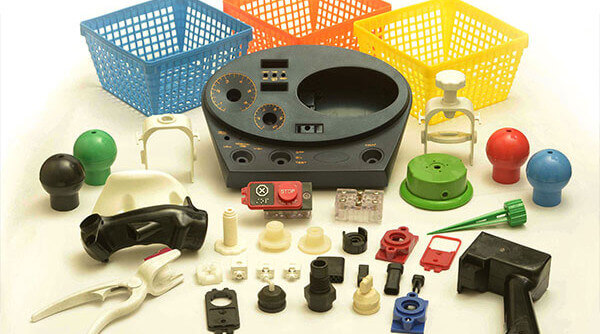Types of plastic molding
There are two types of plastics: thermoplastics and thermorigid. Thermoplastics are meltable and thermosets are not. The difference is in how the polymers are formed. Polymers, or chains of atoms, are like one-dimensional strings in thermoplastics, and if they melt, they can take on a new shape. In the thermorigid they are three-dimensional networks that always retain their shape. A wide variety of processes are used to form or mold plastics, some are only suitable for thermoplastics, others only for thermosets, and some processes are suitable for both.
Extrusion
Extrusion is a molding process that begins with “raw” plastic material such as granules, powder, or beads. A hopper feeds plastic into a rotating chamber. The chamber, called an extruder, mixes and melts the plastic. The melted plastic is forced out through a die and takes the shape of the finished product. The item falls onto a conveyor belt where it is cooled with water and cut. Some products that can be manufactured by extrusion include sheets, films, and tubes.
Injection molding
Injection molding uses the same principle as extrusion. Raw plastic is fed from a hopper into a heating chamber. Instead of being forced through a die, however, it is forced into a cold, high-pressure mold. The plastic cools and solidifies, and the product is cleaned and finished. Some products manufactured by injection include butter pots, bottle caps, toys, and lawn furniture.
blow molding
Blow molding uses injection of air after a plastic has been extruded or injected. Extrusion blow molding uses a die that creates a hot plastic tube with a cooled mold around it. Compressed air is blown through the tube to force the plastic into the shape of the mold. This allows manufacturers to create continuous and uniform hollow shapes, rather than having to injection mold each one. Injection blow molding also uses an injection mould, but instead of making a finished product, the mold is an intermediate step in which the plastic is heated to be blown into its final shape in a separate cold mould.
compression molding
Compression molding is the process of taking a pre-specified volume of plastic, placing it in a mold, and then using another mold to crush or compress it within the first mold. The process can be automatic or manual and is used for both thermoplastic and thermorigid materials.
Thermoforming
Thermoforming is the process of heating a plastic film without melting it, softening it enough so that it takes the shape of a mold against which it is pressed. The manufacturer makes the plastic into the desired shape using high pressure, vacuum, or a male mold. After the finished product has cooled, it is removed from the mold and the remnants are recycled for use in new film.

